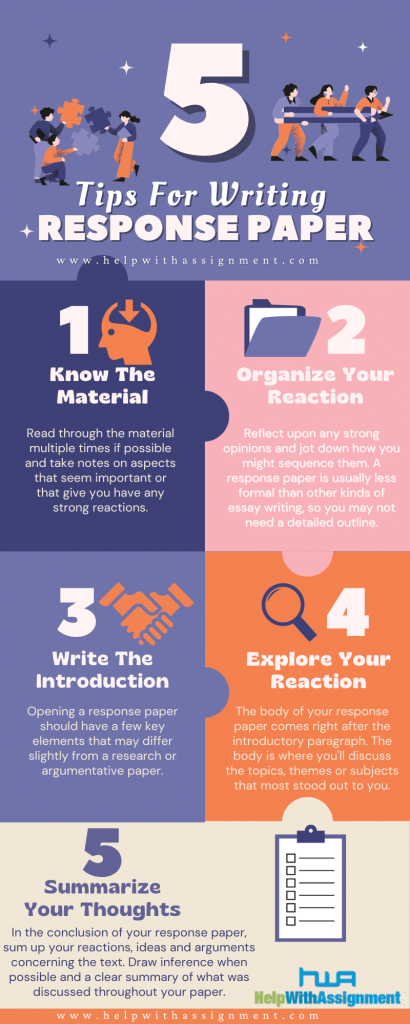- Home
- About Us
- Services
- Online Assignment Help
- Auditing Assignment Help Service
- Nursing Assignment Help
- Excel Assignment Help
- Advanced Economics Homework Help
- XML Assignment Help
- Strategic Management Assignment Help
- Logarithm Assignment Help
- Probability Assignment Help
- Matrices Assignment Help
- Commercial Bank Management
- Thesis Proposal Help
- Corporate Strategy
- Electrical Engineering
- Civil engineering
- Mechanical Engineering
- Electronics Engineering
- Financial Plan Development
- Research Paper
- Political Science Assignment Help
- Operations Management Assignment Help
- Computer Vision Assignment Help
- Commercial Bank Management
- IT Security Assignment Help
- College Essay Help
- Term Paper Help
- Medical Science Assignment Help
- Nursing Thesis Writing Help
- Religion
- Thesis Help
- Supply Chain Management Assignment Help
- Australia Assignment Help
- Cause and Effect Essay
- International Finance Assignment Help
- Statistics Assignment Help
- Computer Science
- Information Technology
- Bioinformatics Assignment Help
- Biostatistics Assignment Help
- Excel Assignment Help
- Taxation
- Research Proposal Help
- SAASU Assignment Help
- Auditing Assignment Help Service
- Workplace Learning in Finance
- Dissertation & Homework Help
- Custom Essay Writing Help
- Online Assignment Help
- Reviews
- Tutors
Welcome to our comprehensive guide on mastering the art of writing a response paper! Whether you’re a student, an academic, or a writer, this guide is designed to help you understand the basics, provide step-by-step instructions, and offer tips and tricks for crafting a stellar response paper. In this introduction, we will define what a response paper is and why it is an important skill to develop. So, let’s dive in and unlock the secrets to writing an effective and engaging response paper!
Understanding the Basics: What is a Response Paper?
A response paper is a type of essay that allows you to express your personal reaction to a book or article. Unlike formal reviews, response papers encourage the use of phrases like “I thought” and “I believe” to express your opinions. In a response paper, you still need to have a thesis and support it with evidence from the work you are responding to.
Writing a response paper offers a more personal and subjective approach to analyzing and reflecting on a text or piece of media. It allows you to highlight your individual reaction as a reader or viewer. It can be an opportunity for self-reflection and exploration of your own thoughts and feelings about a work.
When writing a response paper, it’s important to provide specific examples or quotes from the work to support your claims and opinions. This helps to strengthen your argument and demonstrate your engagement with the text. Response papers can be a valuable tool for engaging with and critically analyzing the themes, ideas, and arguments presented in a book or article.
Writing a response paper can also help you develop your own voice and perspective as a reader and thinker. It allows you to articulate and communicate your thoughts and feelings about a work, and to engage in a dialogue with the author or creator. By reading and responding to a text, you can deepen your understanding of its core points and explore its relevance to your own life and experiences.
To write a response paper, it is helpful to start by reading the text or watching the media attentively. As you read, mark interesting pages and take notes on key ideas, quotes, and examples. This will help you to form an initial understanding of the work and identify its main points.
When structuring your response paper, start with an introduction that provides the name and author of the work, as well as a brief summary. Then, present your thesis statement, which is the main argument or claim that you will be exploring in your response. In the body paragraphs, develop your main points and provide evidence from the work to support your ideas. Finally, conclude your response paper by summarizing your main points and reflecting on the overall significance of the work.
Overall, a response paper allows you to engage with a text or piece of media on a personal level. It offers a platform for expressing your thoughts, opinions, and reactions, while also developing your critical thinking and analytical skills. By following the structure rules and tips, you can effectively write a response paper that showcases your individual perspective and engagement with the work.
Step-by-Step Guide: Writing an Effective Introduction for your Response Paper
Transitioning smoothly from the previous section, now that we understand the importance of a strong introduction in a response paper, let’s dive into a step-by-step guide on how to write an effective introduction. Whether you are a student, academic, or writer, mastering the art of crafting an engaging introduction is crucial for capturing your reader’s attention and setting the tone for the rest of your response paper. In this section, we will explore the purpose of an introduction, provide tips for writing an effective one, discuss the structure of an introduction for a response paper, and give examples of engaging opening sentences. By the end of this guide, you will have the tools and knowledge to make your introduction stand out and grab the reader’s attention.
Crafting Strong Body Paragraphs: Supporting Your Response with Evidence and Examples
Crafting strong body paragraphs is an essential skill for students, academics, and writers alike. These paragraphs play a crucial role in supporting the thesis claim of an essay through the use of evidence and cogent analysis. By following a basic structure that includes a topic sentence and supporting evidence, you can effectively convey your ideas and strengthen your argument.
One key aspect of writing body paragraphs is the use of effective paragraphing techniques. This involves creating smooth transitions between paragraphs and avoiding repetitive information. By doing so, you can maintain the reader’s engagement and ensure that your ideas flow logically from one paragraph to the next.

Formatting and Citations: Mastering the Technical Aspects of Writing a Response Paper
Transitioning from understanding the technical aspects of writing a response paper to actually implementing them, formatting and citations play a crucial role in ensuring the effectiveness and professionalism of your work. Proper formatting and citations not only enhance the overall appearance of your paper but also provide credibility and support for your arguments.
When writing a response paper, it is important to distinguish it from a plain analysis. A response paper allows you to incorporate personal experiences, opinions, and reactions to the material you are analyzing. It gives you the opportunity to engage with the text on a deeper level and express your thoughts and insights. By using proper formatting and citations, you can effectively structure your response paper and provide evidence for your claims.
One of the benefits of using proper formatting and citations is that it helps you structure your paper effectively. An introduction should provide the reader with the necessary background information and a brief summary of the material you are responding to. The body paragraphs should present your main points, supported by evidence and examples. Citations play a crucial role in providing references to the original source material, allowing readers to further explore the topic and verify the information you present.
Incorporating personal experiences and opinions into your response paper can add depth and authenticity to your writing. By relating the material to your own life, you can provide a unique perspective and engage the reader on a more personal level. However, it is important to balance personal anecdotes with analysis and evidence to maintain the academic integrity of your paper.
When it comes to formatting and citations, there are different styles commonly used in response papers, such as APA (American Psychological Association) or MLA (Modern Language Association). These styles provide guidelines for citing sources, formatting headings, and organizing your paper. It is important to familiarize yourself with the specific requirements of your instructor or institution to ensure compliance with the chosen style.
Improper formatting and citations can have serious consequences, including plagiarism. Plagiarism, whether intentional or unintentional, is a serious academic offense that can lead to severe penalties. By properly citing your sources and adhering to formatting guidelines, you not only avoid plagiarism but also demonstrate your respect for the intellectual property of others.
Fortunately, there are resources and tools available to help you with formatting and citations. Citation generators can assist you in generating accurate and properly formatted citations for your sources. Style guides provide comprehensive instructions on formatting and citations according to different styles. It is important to consult these resources and ensure that your paper meets the required standards.
Lastly, proofreading and editing are essential steps in ensuring proper formatting and citations in your response paper. By carefully reviewing your work, you can identify and correct any formatting errors, inconsistencies, or missing citations. Paying attention to detail in this aspect of your writing shows your commitment to producing high-quality work.
Tips and Tricks: Enhancing Your Writing Skills for a Stellar Response Paper
Now that we understand the importance of having strong writing skills when it comes to response papers, let’s dive into some tips and tricks to enhance those skills and create a stellar response paper.
When analyzing and critiquing the text or material being responded to, it’s important to provide evidence to support your arguments. This can be done by referencing relevant facts, quoting key passages, or citing other reputable sources. Additionally, don’t be afraid to incorporate your own insights and personal experiences into your response paper. This not only adds depth to your analysis but also helps to establish your unique perspective.
To convey your ideas effectively, it’s crucial to use clear and concise language. Avoid unnecessary jargon or complex sentence structures that may confuse your readers. Instead, opt for simple and straightforward language that allows your ideas to shine through.
After completing your first draft, take the time to edit and proofread your response paper. This will ensure that your writing is clear, coherent, and free from errors. Consider seeking feedback from peers or instructors to gain valuable insights and improve your writing skills further.
Lastly, take advantage of additional resources and tools that can help enhance your writing skills for response papers. Online writing guides, example papers, and writing workshops can provide valuable guidance and support throughout the writing process.
By implementing these tips and tricks, you’ll be well on your way to creating a stellar response paper that showcases your strong writing skills and analytical thinking.
In a Nutshell
Writing a response paper may seem daunting at first, but with the knowledge and skills gained from this comprehensive guide, you are well-equipped to tackle this task with confidence. By understanding the basics, such as the purpose and structure of a response paper, you can effectively engage with the text and provide thoughtful analysis. Crafting a strong introduction and supporting your response with evidence and examples in the body paragraphs ensures a well-rounded and persuasive argument. Additionally, mastering the technical aspects of formatting and citations showcases your attention to detail and professionalism. Finally, by implementing the tips and tricks provided, you can enhance your writing skills and create a response paper that is both engaging and impactful. So, go forth and conquer the art of writing a response paper, and let your voice be heard!
To take advantage of our reliable research paper writing service, simply fill out the order form with your requirements. HwA will deliver a well-researched academic paper tailored to your specifications at a fair price while ensuring timely delivery. Our service is known for providing top-scoring, plagiarism-free research papers. Additionally, we offer unlimited revisions and 24/7 customer support as part of our commitment to quality.
So, don’t hesitate—place your order today and receive expert academic assistance instantly!
Sources:
How to Write a Response Paper – ThoughtCo
How To Write a Response Paper in 5 Steps (Plus Tips) | Indeed.com
[PDF] How to improve your academic writing – University of York




